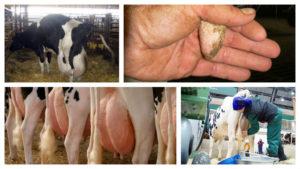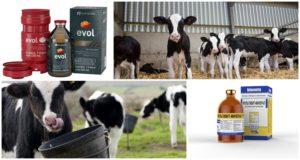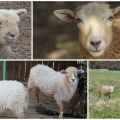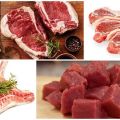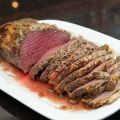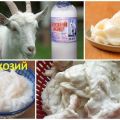Names of cow body parts and carcass cutting scheme, meat storage
The increased interest in cattle breeding is due to the value of beef as a dietary product. The cost of beef is much higher than that of pork. When cutting a cow's carcass, body parts have different costs. The correct procedure for processing carcasses is within the power of only an experienced specialist with certain skills and knowledge in this area. The organization of the slaughtering site, readiness for this process are equally important.
What is the difference between meat from different parts of a cow?
Beef from different cuts has significant differences. The cost of different chunks will differ from one cow. Beef from the back and breast of an animal is considered soft and juicy. The muscles of these zones in the cow are not developed. Therefore, the meat is delicious and tender. The more fat the beef has, the juicier it is. But too much fat will not be beneficial. Correct feeding of a heifer is the key to success. An even arrangement of fat veins in each piece is considered ideal.
The muscles of the shoulder girdle and shoulder blades are more developed, so the meat of these pieces is tougher. Because of this, taste does not suffer. The fatty layers of muscles that are involved in walking are absent. It is difficult to call beef from such pieces juicy.
What are the main parts distinguished in the ink?
Cut beef is divided into grades.
Higher:
- Thick edge, entrecote, loin on the rib, ribs on the back.
- The brisket boneless and boneless is located on the front.
- Tenderloin, boneless, boneless fillets are in the lumbar part.
- The sacrum is located in the pelvic region.
- The rump is the thighs of the animal.
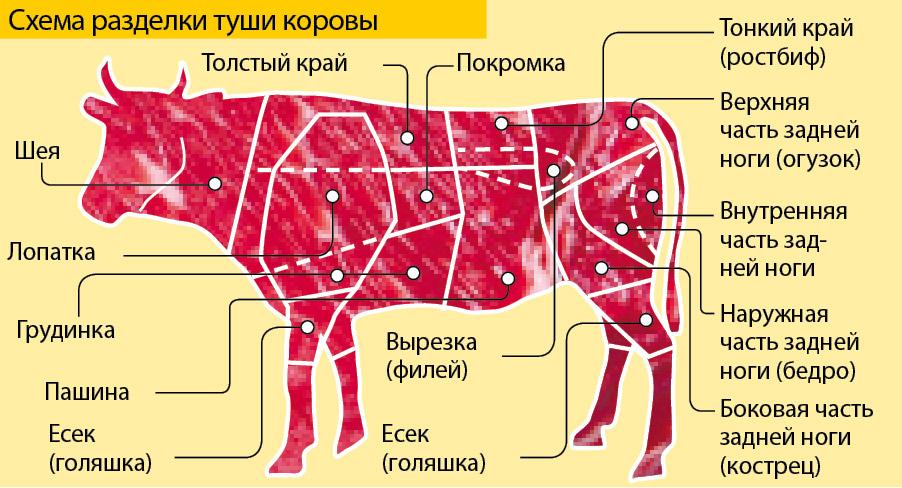
The first.
- Scapula (taken from the upper shoulder girdle).
- Shoulder girdle meat.
- The flank is located in the groin area.
- Inner neck.
Second.
- Cut, neck from the outside.
- Shank.
- Back calf or esek.
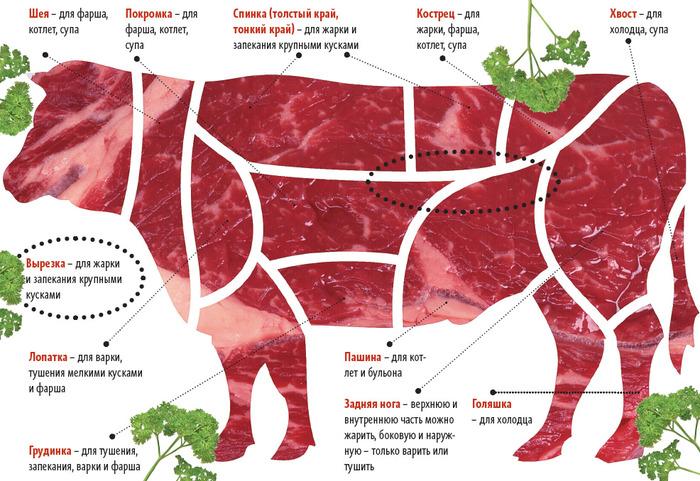
Carcass cutting scheme
After the slaughter of the animal, the carcass is cut. It is divided into two half carcasses. Each half carcass is cut into cuts. Cutting process:
- On the half carcass, an incision is made in the region of the last ribs, reaching the vertebra. In the region of the 13th and 14th vertebra, the ridge is cut into 2 parts.
- The shoulder blade is cut from the brisket, the meat is cut from the humerus.
- The meat is cut from the neck, the cervical and dorsal regions are cut in half.
- The sternum is cut off, the spine is cut between the dorsal and lumbar regions.
- The meat is cut from the spine, carefully separating it from the vertebrae.
- The lumbar and sacral regions are cut, the pelvic part is separated.
- Cut out the flank and edge.
After this procedure, the parts are boned in the following order: scapula, neck, brisket, thick edge, subscapularis, under-edge, thin edge, posterior part.
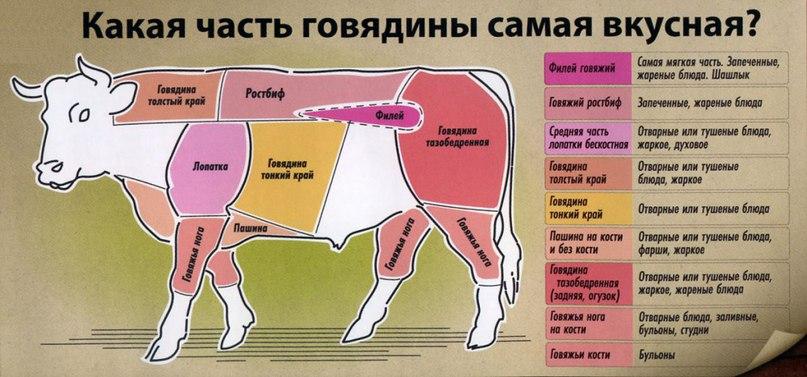
What's on offer in the store?
Before buying beef, choose the part of the meat that is needed for cooking. A careful examination to determine the amount of fat and thickness helps with the selection. The sequence number on the cut pieces indicates a specific part. In Russia, it is customary to divide the carcass into 14 parts. When choosing, they are guided by the following:
- Veal is light pink, lean meat, suitable for dietary and baby food.
- A 3-year-old animal produces light red meat.
- 5-year-old cows and gobies produce red meat.
- Dark red meat with yellow fat layers is obtained from cows over 5 years old.
Nutritionists advise eating beef from cattle for 4-5 years. The product is checked as follows: the piece is pressed. In a quality product, a pit does not form, and hands do not stick.
The product can be eaten no more than twice a week, giving preference to lean pieces. Excessive consumption of fat leads to the formation of cholesterol plaques, which lead to blockage of blood vessels.
Storing cut meat
Chopped beef is stored in the refrigerator for no more than 14 days. The pan where the pieces are located must be tightly closed with a lid. It is advisable to limit contact with open air. Better to choose enameled dishes.
If a suitable saucepan is not found, the cut pieces are wrapped in foil and wrapped on top with a thick cloth.
Fresh meat is also kept on ice. Before that, it is wrapped in a cloth or placed in a bowl. Defrost the beef gradually to preserve its beneficial properties and taste.
The meat can be salted. To do this, it is cut into pieces and rubbed with salt. In the thick pieces, cuts are made so that the salt saturates all the fibers. After a month, the product is ready for use. The shelf life of salted beef is 6 months.
